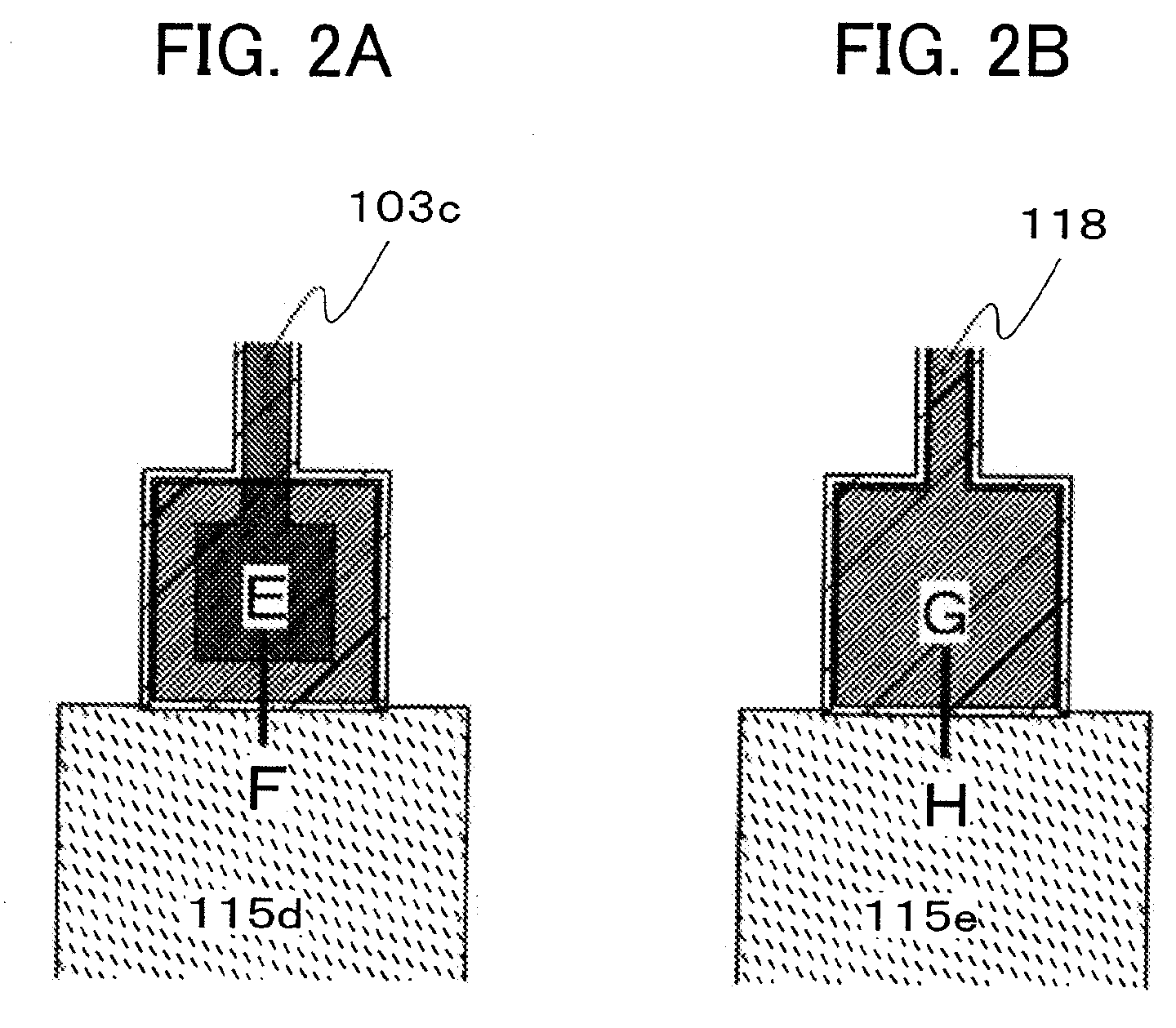Semiconductor device and method for manufacturing semiconductor device
a semiconductor and semiconductor technology, applied in the direction of instruments, optics, transistors, etc., can solve the problems of significant challenges in the reduction of the number of photomasks, the decrease of the throughput of the manufacturing process of amorphous semiconductor tfts, and the increase of the manufacturing cost of the manufacturing process. , to achieve the effect of reducing the time of manufacture and manufacturing cost, and improving the aperture ratio
- Summary
- Abstract
- Description
- Claims
- Application Information
AI Technical Summary
Benefits of technology
Problems solved by technology
Method used
Image
Examples
embodiment mode 1
[0059]FIG. 1 is a plan view illustrating an example of an active matrix substrate having amorphous semiconductor TFTs of the present invention; here, the structure of one pixel among a plurality of pixels arranged in matrix is shown for simplicity.
[0060]As shown in FIG. 1, an active matrix substrate having amorphous semiconductor TFTs has a plurality of gate wirings 103a which are arranged in parallel to each other, and source wirings 119a arranged in parallel to each other, which are arranged perpendicularly to the gate wirings 103a.
[0061]Further, the pixel electrode 115f is placed in a region surrounded by the gate wiring 103a and the source wiring 119a. The pixel electrode 115f is formed of the same material as the transparent conductive layer 115b of the source / drain electrode 119b.
[0062]Further, a capacitor line 103b is provided between two adjacent gate wirings below the pixel electrode 115f, in parallel with the gate wirings. The capacitor line 103b is provided in every pix...
embodiment mode 2
[0105]In Embodiment Mode 1, a TFT using an amorphous semiconductor layer is described; however, in this embodiment mode, an example of a TFT using a microcrystalline semiconductor layer will be described. A schematic diagram of a TFT using a microcrystalline semiconductor is shown in FIG. 9. In this embodiment mode, a stack of a first microcrystalline semiconductor layer 126 and a first amorphous semiconductor layer 127 is used instead of the first amorphous semiconductor layer 106 in Embodiment Mode 1.
[0106]The first microcrystalline semiconductor layer 126 serves as a channel. This first microcrystalline semiconductor layer 126 can be formed by high frequency plasma CVD with a frequency of several tens of MHz to several hundreds of MHz or by microwave plasma CVD with a frequency of I GHz or more. Typically, the microcrystalline semiconductor layer can be formed using silicon hydride such as SiH4 or Si2H6 which is diluted with hydrogen. Further, the microcrystalline semiconductor f...
embodiment mode 3
[0108]In this embodiment mode, an example of using a positive photosensitive resin is used instead of the third photoresist patterns 124a to 124d in the third photolithography process of Embodiment Mode 1 will be described. A schematic diagram of a TFT using the positive photosensitive resin is shown in FIG. 10.
[0109]In the third photolithography process in Embodiment Mode 1, a positive photosensitive material is formed, and exposure is performed from the rear surface of the substrate 101. Using the fact that a portion corresponding to the first conductive layer patterned by first photolithography process and the metal layer patterned by second photolithography process in Embodiment Mode 1 is shielded from light, a positive photosensitive material pattern 129 is formed. At the time of forming the positive photosensitive material pattern 129, using the first conductive layer and the metal layer which are formed over the substrate 101 as masks, exposure is performed from the rear surf...
PUM
| Property | Measurement | Unit |
|---|---|---|
| thickness | aaaaa | aaaaa |
| thickness | aaaaa | aaaaa |
| thickness | aaaaa | aaaaa |
Abstract
Description
Claims
Application Information
 Login to View More
Login to View More - R&D
- Intellectual Property
- Life Sciences
- Materials
- Tech Scout
- Unparalleled Data Quality
- Higher Quality Content
- 60% Fewer Hallucinations
Browse by: Latest US Patents, China's latest patents, Technical Efficacy Thesaurus, Application Domain, Technology Topic, Popular Technical Reports.
© 2025 PatSnap. All rights reserved.Legal|Privacy policy|Modern Slavery Act Transparency Statement|Sitemap|About US| Contact US: help@patsnap.com



